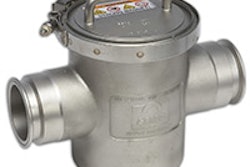Today’s manufacturing environments include a complex blend of legacy and modern systems. Modern manufacturing processes and lines are faster and more connected than ever before. Where employees once played a critical role at every step of the process, today, many of those processes are automated. Today, manufacturers face new challenges in finding ways to encourage greater efficiency, productivity and employee satisfaction from employees and partners throughout the enterprise.
The tight integration of technology and production systems has given rise to a new way of working. Employees with access to business and production systems can deliver greater productivity and value to the manufacturer throughout the day. The accelerated adoption of mobile devices such as tablets and smartphones in the consumer world has been a catalyst for change in the manufacturing industry. According to Manufacturing Executive, 63 percent of manufacturing companies permit their employees to bring their own devices to work.1
And while manufacturers are recognizing benefits by providing employees with flexibility to access manufacturing and business systems locally or remotely over employee-owned devices, only 17 percent of manufacturing enterprises have a formal bring- your-own-device (BYOD) strategy with clear goals and objectives. A clear strategy for enabling and harnessing the power of these devices in the workplace can yield tangible benefits to manufacturers, both on the plant floor and in the carpeted office.
As most organizations have discovered, BYOD has ushered in a new age of mobility that can direct efficiency across the business. A BYOD strategy that enables mobile access to processes and information can enable the business to give employees a choice of corporate or self-owned devices. This freedom of choice can be used to increase operational effectiveness, rapid innovation, and workforce productivity throughout the entire manufacturing value chain. Whether enabling work to be done on an employee’s personal device, enabling the sharing of plant floor and enterprise applications with external partners, enhancing the availability of corporate learning and safety and security resources, or empowering subject matter experts (SMEs) to service equipment and review designs wherever they may be physically located, employees and senior management want this kind of flexibility today.
It’s Not About the Devices — It’s About the Experiences
Line-of-business executives, VPs of operations, supply chain directors, and VPs of engineering understand that the point is not just satisfying employees through BYOD programs, but also how effectively these programs drive efficiency and help your manufacturing business achieve its fundamental objectives such as:
Supply Chain Agility
You can take advantage of BYOD strategies to connect in real time to supply warehouses, production facilities, and the field (including distribution channels), and to integrate this data with enterprise resource planning (ERP), manufacturing executions systems (MES) and customer relationship management (CRM) applications. This enables a faster response to critical issues across operations, resulting in a more agile and flexible supply chain that adapts to the dynamic changes in market conditions and customer demands so you can mitigate losses and excess inventory.
Continuous Innovation
The ability to integrate different types of communications such as voice, video, and data on different mobile devices and software platforms increases the efficacy of communicating across functions, levels of expertise, and even language barriers. The ability to convey complex information across such boundaries drives efficiency throughout the entire manufacturing value chain, creating an environment that fosters collaboration and supports continuous innovation. Training is also more effective when workflows are standardized, and tools such as video can be delivered at mobile endpoints.
Operational Excellence
BYOD solutions allow manufacturers to universally monitor and control the day-to-day functions of multiple business lines and facilities in rich detail. Best practices can be captured and shared across operations, and processes can be tuned or enhanced based on information made available anywhere, anytime, on any device throughout the entire value chain. Subject matter experts can be quickly identified to address complex issues, and approvals and decisions can be accelerated with paperless workflows.
The Business Imperative
Today’s CIO of manufacturing and process control companies are challenged with delivering innovative business models that meet revenue imperatives, while providing employees with more freedom to work the way they want while reducing IT complexity.
According to a 2012 Manufacturing Executive survey, only 17 percent of manufacturing enterprises having a formal BYOD strategy with clear goals and objectives. An important challenge is to deliver a secure high-quality user experience. Many applications inside manufacturing operations are graphic- and text-intensive. Users must navigate through many text-heavy screens and view graphics, schematics, tables, charts, dashboards, and video when connecting and collaborating with remote experts. BYOD imperatives must deliver a consistent user experience across multiple platforms and devices (including Apple iOS, Android, Windows).
IT organizations are challenged to deliver these experiences by designing, deploying, and maintaining an architecture that:
- Secures both corporate and noncorporate devices, and enforces policy to protect intellectual property
- Scales infrastructure to meet the growing number of devices per user
- Increases productivity through the quality of the user experience
- Integrates real-time manufacturing enterprise applications, including SCADA, MRP, and MES, with plant-floor instrumentation and production data in real time
- Delivers rich voice and video data for increases workflow collaboration and productivity anywhere and on any device
- Simplifies management and provisioning of software, lowering operational costs
Armed with the right tools, mobile workers throughout the manufacturing value chain can cost-effectively use BYOD strategies and allow the global value chain access to the right data at the right time in the right format, providing a unique platform to innovate, optimize, and drive productivity without compromising the way their business works.
ALLEVIATING THE RISKS
Considerations for BYOD Adoption
For any widespread adoption of BYOD, there are a number of considerations that need to be thought about beforehand.
Understand User Segments and Needs
It is important to understand that there are different segments of users within any BYOD implementation. One recommendation is to conduct a user segmentation analysis within the company to help understand needs and likely level of required support. An example is shown in Figure 1.
Every company is different. Figure 1 evaluates employee roles against the need for mobility and mobile applications and against the likely level of required support. BYOD deployments are easy with users who only need low levels of IT support, possibly using self-support communities to share best practices. Deployments may be more difficult with users who have high mobility needs but also require high support levels, such as executives.
Conducting such an analysis will help understand entitlement policies and support models and may prevent frustration and cost overruns in the IT budget.
You can read Part 2 of this article here.























